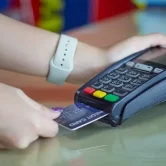- Your cart is empty Browse Shop
Proud in Camden Introduces Finger Vein Payments

In Proud a relaxed, welcoming drinking bar in Camden, sits an unassuming gadget which the locals refer to as “Fingopay.” Perched on the bar itself, and linked to a very small screen. This biometric gadget looks more suited to a local GP Surgery than a pub, but it’s not designed to help improve customers’ health and wellbeing, but to allow customers to pay for their drink(s).
This small unassuming “Fingopay” device is the latest frontier in biometric card payments as society determines to rid us of cash, cheques and pay for items quickly and conveniently. Instead of using the popular Chip and PIN facility, the humble finger processes the payment.
There is ongoing talk in the industry that devices such as “Fingopay” may end up in our local supermarkets, sporting locations, and could widely be used at festivals.
So how does Fingopay work, and is it reliable?
The Fingopay technology builds a 3D map of the veins within a finger, creating a natural personal key and its creator – biometrics firm Sthaler – claims that the chance that two people have the same vein structure is 3.4 billion-to-1.
In turn, by linking the details of the vein pattern to a specific debit or credit card, you can then close the circle. In theory you won’t need to pay for a round of drinks using your contactless card and will be able to pay using your finger. Some industry experts are wary about the reliability, but to date the feedback on this biometric payment solution is extremely positive.
The use of biometric technology is increasing in popularity, with Mastercard recently announcing the launch of ‘selfie pay’ in Europe. What are your thoughts on biometric technology, have you tried it, how did you get on? It’s clearly evident that Chip & PIN won’t be going anywhere anytime soon, but we all need to start to embrace the changes in payment solutions. Let the team at Wireless Terminal Solutions know your thoughts.




